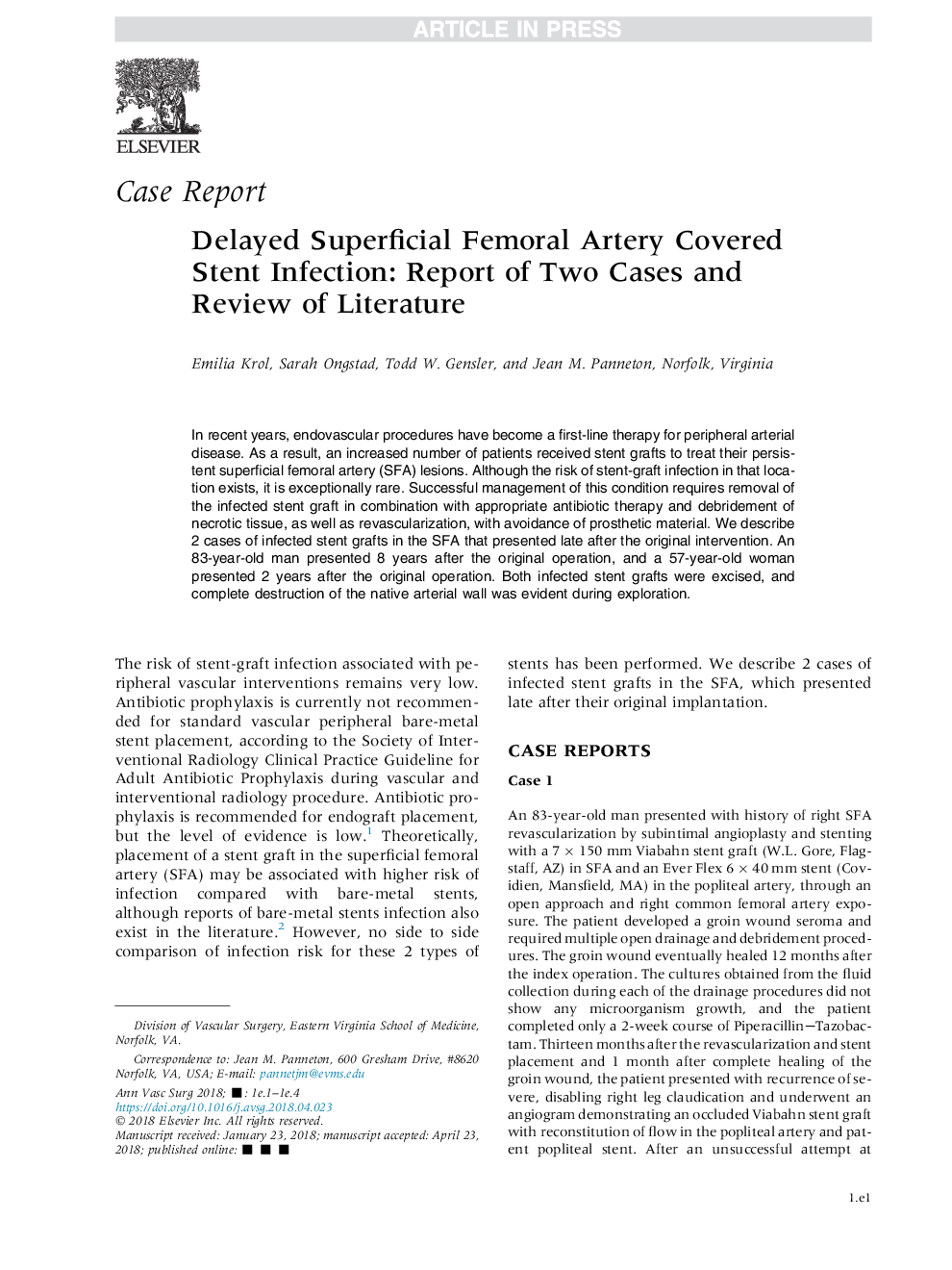| Article ID | Journal | Published Year | Pages | File Type |
|---|---|---|---|---|
| 8962851 | Annals of Vascular Surgery | 2018 | 5 Pages |
Abstract
In recent years, endovascular procedures have become a first-line therapy for peripheral arterial disease. As a result, an increased number of patients received stent grafts to treat their persistent superficial femoral artery (SFA) lesions. Although the risk of stent-graft infection in that location exists, it is exceptionally rare. Successful management of this condition requires removal of the infected stent graft in combination with appropriate antibiotic therapy and debridement of necrotic tissue, as well as revascularization, with avoidance of prosthetic material. We describe 2 cases of infected stent grafts in the SFA that presented late after the original intervention. An 83-year-old man presented 8Â years after the original operation, and a 57-year-old woman presented 2Â years after the original operation. Both infected stent grafts were excised, and complete destruction of the native arterial wall was evident during exploration.
Related Topics
Health Sciences
Medicine and Dentistry
Cardiology and Cardiovascular Medicine
Authors
Emilia Krol, Sarah Ongstad, Todd W. Gensler, Jean M. Panneton,
